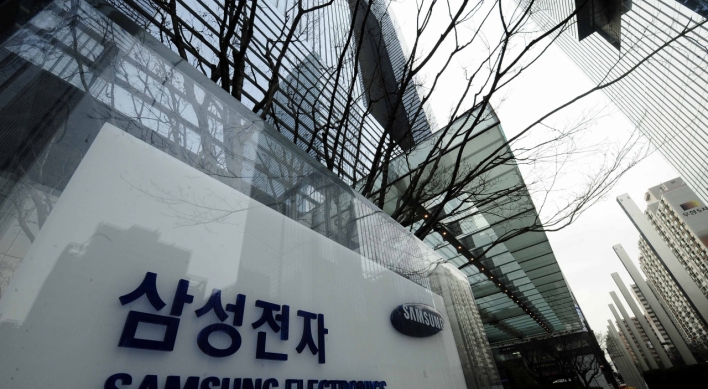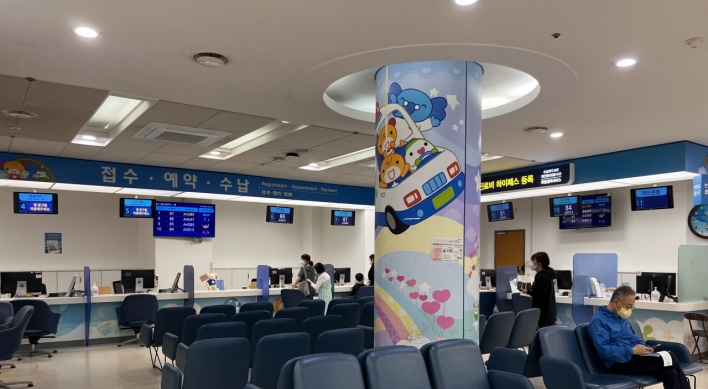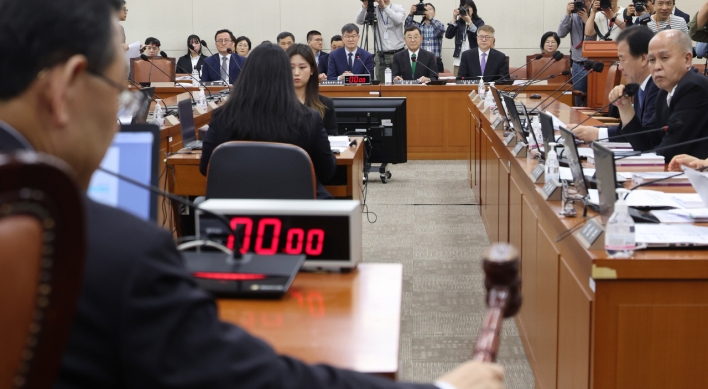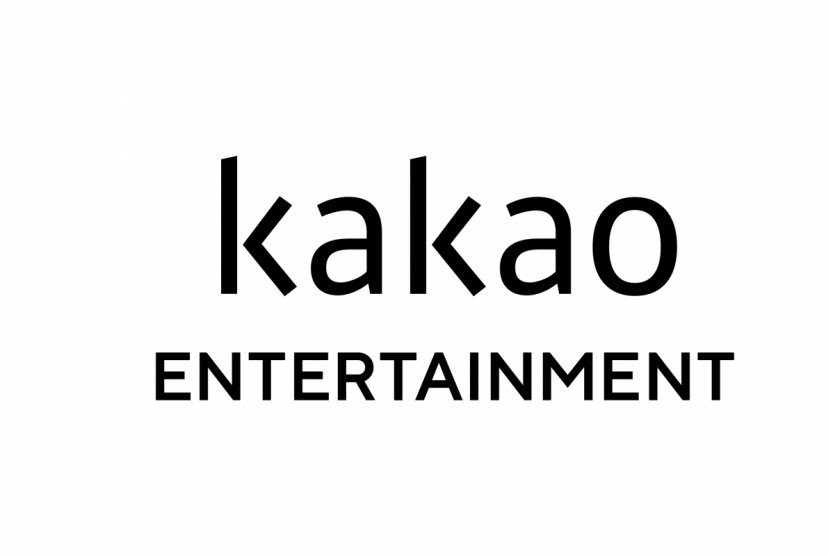Events
The 2014 Asian Games will showcase elite Asian talent in 36 sports and disciplines. These include 28 Olympic sports that will be showcased at the 2016 Summer Olympics.
In addition, eight non-Olympic sports will be featured: baseball, tenpin bowling, cricket, kabaddi, karate, sepak takraw, squash and wushu.
Six other sports ― roller sports, board games (chess, go and xiangqi), cue sports, softball, dance sport and dragon boat racing ― that were held in previous games have been dropped from the list.
Softball has been incorporated into baseball as one sport, while soft tennis will be one of the tennis events.
For the first time, there will be compound archery, mixed relay triathlon and judo team events.
A total of 439 gold medals will be up for grabs.
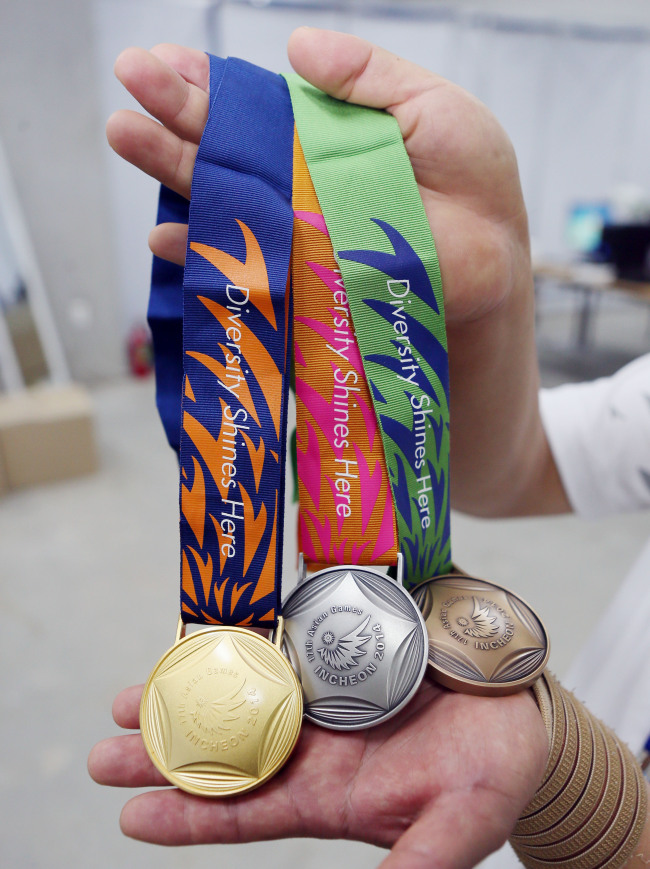
Venues
Forty-nine competition venues and 48 training facilities will be used during the Games.
Among the 49 competition venues, 10 are in six cities of Gyeonggi Province, while another two are in Chungju and Seoul. The remaining venues are in eight Incheon districts and a county inside the city.
Ten venues have been newly constructed, including the athletes’ and media villages, which provide over 3,300 units and 9,560 rooms for 20,000 sportspersons and journalists.
The main stadium, known as Incheon Asiad Main Stadium, has a capacity of about 62,000 seats, half of which are detachable, meaning the space can be used for other purposes after the Games.
Built on a 631,975-square-meter lot, the $430 million, five-story stadium has a total floor area of 113,620 square meters. The stadium, originally planned for 72,000 seats, was designed by Populous, in association with local firm Heerim Architects and Planners, and illustrates a new level of sustainable design in stadia in Asia.
It uses eco-friendly energy, including solar heat and terrestrial heat, as well as state-of-the-art information technology.
The athletes’ village is located in Guwol-dong in the central part of the city, about a 40-minute drive from Incheon International Airport. The village features 2,220 units in 22 new apartment buildings set up in three blocks.
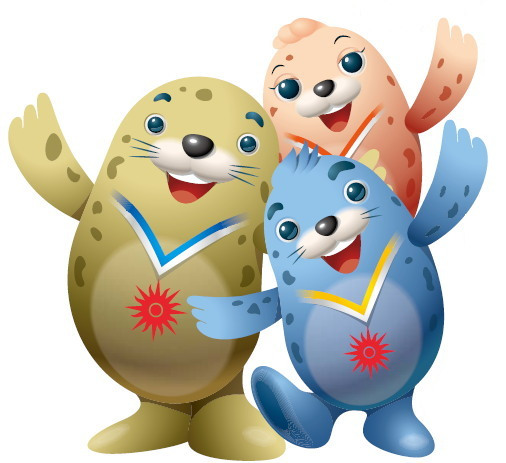
Countries
A total of 45 countries will participate in the Games: Afghanistan, Bahrain, Bangladesh, Bhutan, Brunei, Cambodia, China, Hong Kong, India, Indonesia, Iran, Iraq, Japan, Jordan, Kazakhstan, Kuwait, Kyrgyzstan, Laos, Lebanon, Macau, Malaysia, Maldives, Mongolia, Myanmar, Nepal, North Korea, Oman, Pakistan, Palestinian territories, the Philippines, Qatar, Saudi Arabia, Singapore, South Korea, Sri Lanka, Syria, Taiwan, Tajikistan, Thailand, East Timor, Turkmenistan, United Arab Emirates, Uzbekistan, Vietnam and Yemen.
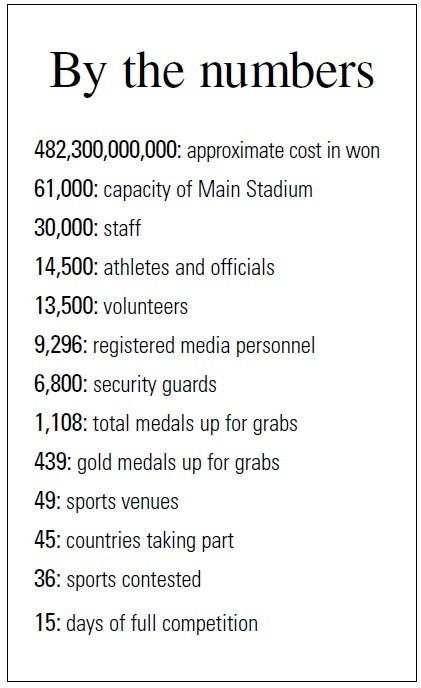
Others
The Games’ mascots ― spotted seals ― are named Barame, Vichuon, and Chumuro. They mean “wind,” “dance” and “light” in Korean, and according to the organizers, they were chosen to symbolize future peace between South and North Korea.
The medal design was approved by the OCA on Aug. 19, 2013, and features a pentagon-shaped symbol representing the five ports of Incheon ― the airport, seaport, teleport, leisure port and business port. It is meant to represent Incheon as the hub of Northeast Asia.
The torch’s design motif is based on the official bird of Incheon City, the crane, with a blue internal cylinder signifying the sky and the ocean. Four other colors ― green, yellow, red and violet ― are meant to represent the five regions of Asia.
The torch was lit at Dhyanchand National Stadium in New Delhi, India, on Aug. 9, marking the first time the torch was lit outside the host country. For the first time also, there was an international torch relay in Weihai, a city in Shandong province, China.
The domestic lighting ceremony was held at Mount Manisan on Ganghwado Island on Aug. 12. The domestic relay began Aug. 13, and traveled through 70 cities for 5,700 km until the opening ceremony.
By Ram Garikipati (ram@heraldcorp.com)
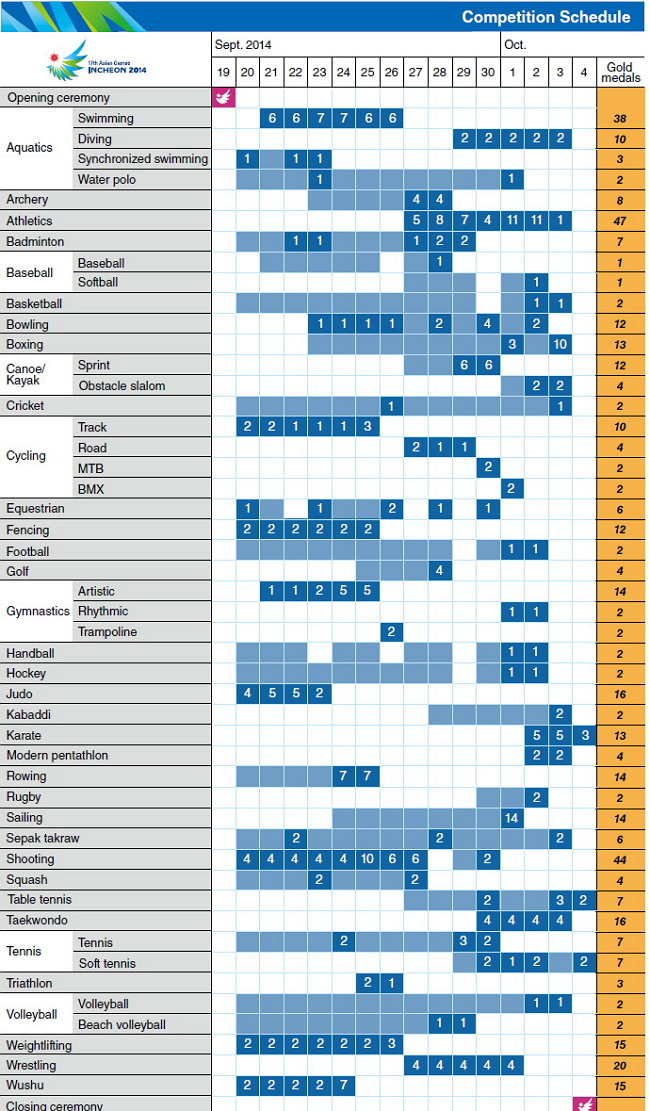
The 2014 Asian Games will showcase elite Asian talent in 36 sports and disciplines. These include 28 Olympic sports that will be showcased at the 2016 Summer Olympics.
In addition, eight non-Olympic sports will be featured: baseball, tenpin bowling, cricket, kabaddi, karate, sepak takraw, squash and wushu.
Six other sports ― roller sports, board games (chess, go and xiangqi), cue sports, softball, dance sport and dragon boat racing ― that were held in previous games have been dropped from the list.
Softball has been incorporated into baseball as one sport, while soft tennis will be one of the tennis events.
For the first time, there will be compound archery, mixed relay triathlon and judo team events.
A total of 439 gold medals will be up for grabs.

Venues
Forty-nine competition venues and 48 training facilities will be used during the Games.
Among the 49 competition venues, 10 are in six cities of Gyeonggi Province, while another two are in Chungju and Seoul. The remaining venues are in eight Incheon districts and a county inside the city.
Ten venues have been newly constructed, including the athletes’ and media villages, which provide over 3,300 units and 9,560 rooms for 20,000 sportspersons and journalists.
The main stadium, known as Incheon Asiad Main Stadium, has a capacity of about 62,000 seats, half of which are detachable, meaning the space can be used for other purposes after the Games.
Built on a 631,975-square-meter lot, the $430 million, five-story stadium has a total floor area of 113,620 square meters. The stadium, originally planned for 72,000 seats, was designed by Populous, in association with local firm Heerim Architects and Planners, and illustrates a new level of sustainable design in stadia in Asia.
It uses eco-friendly energy, including solar heat and terrestrial heat, as well as state-of-the-art information technology.
The athletes’ village is located in Guwol-dong in the central part of the city, about a 40-minute drive from Incheon International Airport. The village features 2,220 units in 22 new apartment buildings set up in three blocks.

Countries
A total of 45 countries will participate in the Games: Afghanistan, Bahrain, Bangladesh, Bhutan, Brunei, Cambodia, China, Hong Kong, India, Indonesia, Iran, Iraq, Japan, Jordan, Kazakhstan, Kuwait, Kyrgyzstan, Laos, Lebanon, Macau, Malaysia, Maldives, Mongolia, Myanmar, Nepal, North Korea, Oman, Pakistan, Palestinian territories, the Philippines, Qatar, Saudi Arabia, Singapore, South Korea, Sri Lanka, Syria, Taiwan, Tajikistan, Thailand, East Timor, Turkmenistan, United Arab Emirates, Uzbekistan, Vietnam and Yemen.

Others
The Games’ mascots ― spotted seals ― are named Barame, Vichuon, and Chumuro. They mean “wind,” “dance” and “light” in Korean, and according to the organizers, they were chosen to symbolize future peace between South and North Korea.
The medal design was approved by the OCA on Aug. 19, 2013, and features a pentagon-shaped symbol representing the five ports of Incheon ― the airport, seaport, teleport, leisure port and business port. It is meant to represent Incheon as the hub of Northeast Asia.
The torch’s design motif is based on the official bird of Incheon City, the crane, with a blue internal cylinder signifying the sky and the ocean. Four other colors ― green, yellow, red and violet ― are meant to represent the five regions of Asia.
The torch was lit at Dhyanchand National Stadium in New Delhi, India, on Aug. 9, marking the first time the torch was lit outside the host country. For the first time also, there was an international torch relay in Weihai, a city in Shandong province, China.
The domestic lighting ceremony was held at Mount Manisan on Ganghwado Island on Aug. 12. The domestic relay began Aug. 13, and traveled through 70 cities for 5,700 km until the opening ceremony.
By Ram Garikipati (ram@heraldcorp.com)

-
Articles by Korea Herald



![[KH Explains] No more 'Michael' at Kakao Games](http://res.heraldm.com/phpwas/restmb_idxmake.php?idx=644&simg=/content/image/2024/04/28/20240428050183_0.jpg&u=20240428180321)



![[Grace Kao] Hybe vs. Ador: Inspiration, imitation and plagiarism](http://res.heraldm.com/phpwas/restmb_idxmake.php?idx=644&simg=/content/image/2024/04/28/20240428050220_0.jpg&u=)
![[Herald Interview] Mom’s Touch seeks to replicate success in Japan](http://res.heraldm.com/phpwas/restmb_idxmake.php?idx=644&simg=/content/image/2024/04/29/20240429050568_0.jpg&u=)


![[News Focus] Lee tells Yoon that he has governed without political dialogue](http://res.heraldm.com/phpwas/restmb_idxmake.php?idx=644&simg=/content/image/2024/04/29/20240429050696_0.jpg&u=20240429210658)



